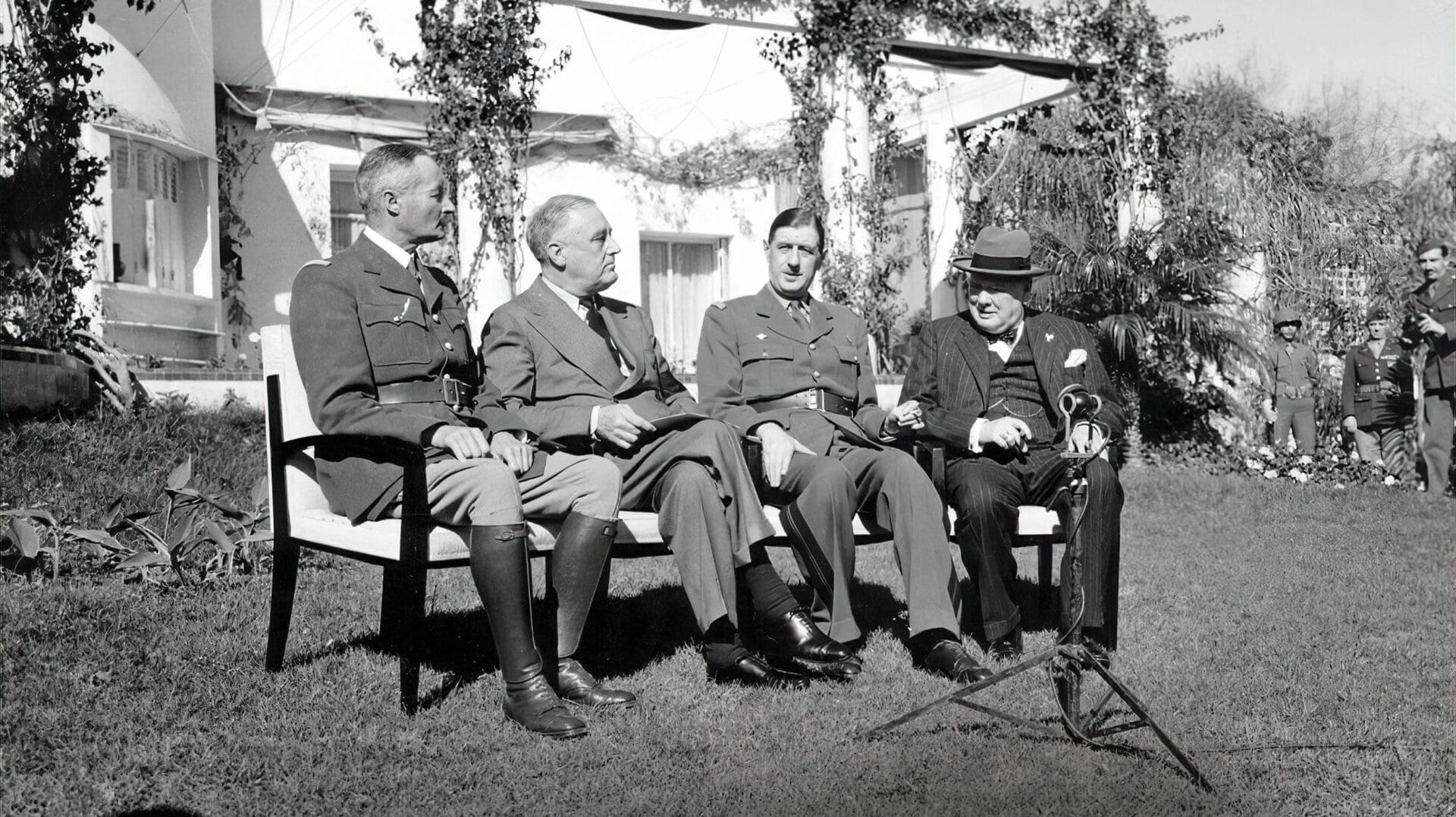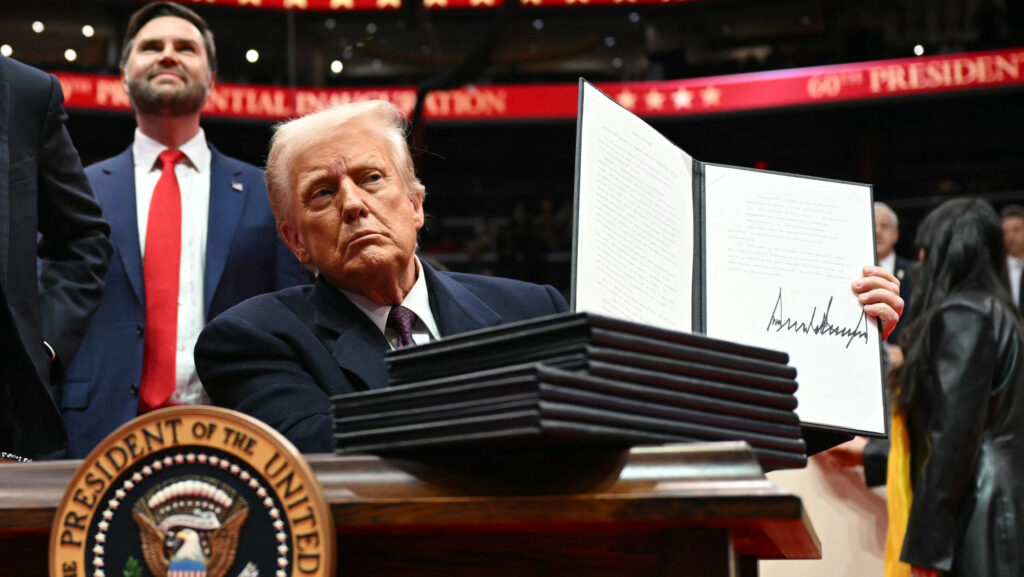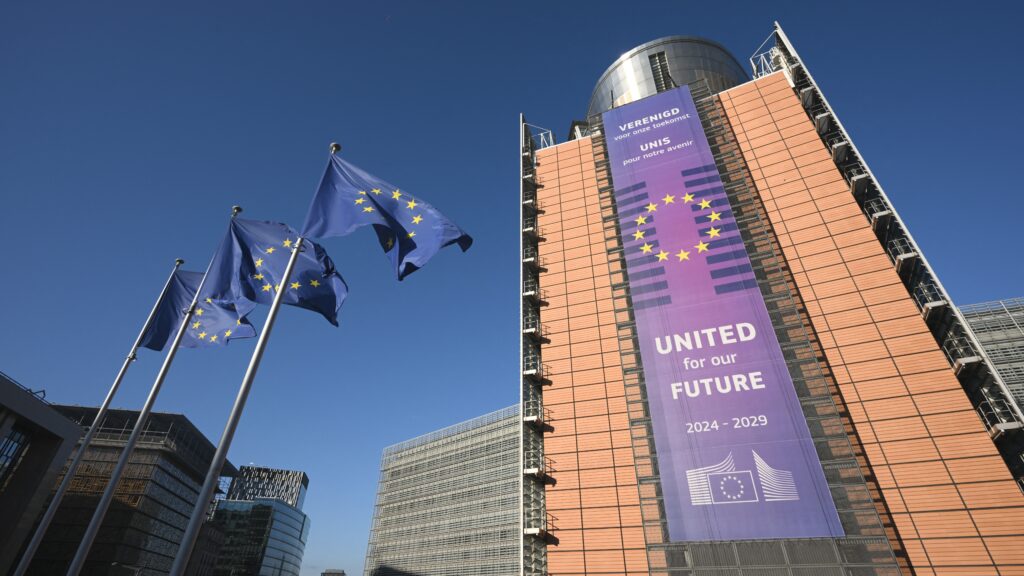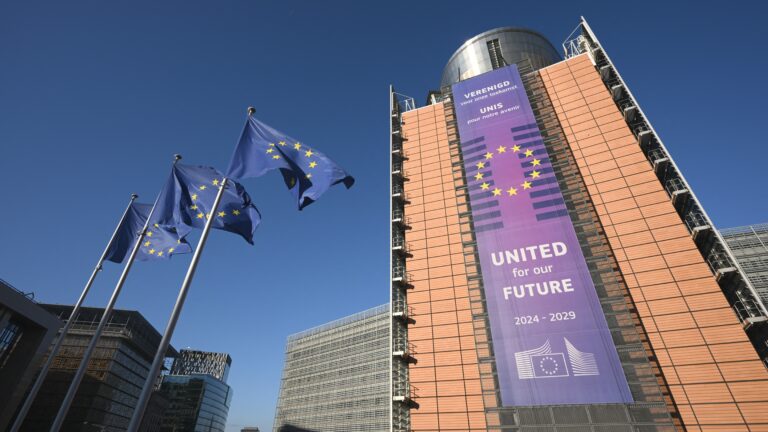This article was published in our print edition’s Special Issue on the European Union.
The European Union is a unique structure built on Europe’s historical past, which tries to avoid the pitfalls of previous attempts at unifying the continent. I agree with Tamás Fricz’s statement that the EU has a very specific institutional system, which mixes sovereigntist and federalist elements.1 From the outset, these different elements have been locked in a constant struggle, which today is an unequal one: while the proposing and executive body, the European Commission, the co-legislator, the European Parliament, and the Court of Justice of the European Union, which has a supervisory and interpretative role, are federalist, the sovereigntist side is represented at the organizational level only in the European Council and the Council of the European Union.
This paper explains how the EU came into being, how the current internal power structure has evolved, and how Brussels is increasingly acting like a traditional imperial centre, disconnected from its original roots. Finally, I will attempt to outline how Europe can return to normalcy and become great again.
Origins and Development of European Integration
The entire history of European integration could fill a whole library, so I will not attempt to cover it in detail in this paper. It is important, however, to outline the factors that have shaped the EU’s identity and place in the world, and how these have changed over time.
Opinions differ on the origins of the idea of European unity. The more romantic viewpoint is that this issue had been at the forefront of European political thinking for centuries, but could only become a political reality after the 1950s, when there was no alternative. The other school of thought argues that competition between states has defined European history much more than unity, and emphasis on the latter is an artificial myth-making exercise. They approach European unity on a market basis, emphasizing its free-market nature.2
Both interpretations have their strengths and weaknesses. It is important to point out that both approach the question from different directions: while one emphasizes political motives and the preservation of peace, the other emphasizes economic aspects and prosperity as the main driving force of European integration. In my view these two factors are inseparable. It can be said, however, that there were periods when one was more successful and important than the other.
European integration after the Second World War was driven by the realization that a new conflict had to be avoided at all costs. Individual states surrendered part of their sovereignty, while at the same time forging ever-closer economic ties with each other, in the hope that this might lead to a lasting peace in Europe. Fricz distinguishes between four distinct periods in the history of the EU: the initial radical federalist upsurge, followed by intergovernmentalism, then increasing federalization, and in the present, he writes about the escalation of internal conflicts.3
‘The inherently federalist structure with certain sovereigntist elements is inevitably a source of internal conflict’
It is important to note that the key early figures of European integration—Monnet, Schumann, Hallstein, Spinelli, and Spaak—were all hard-line federalists. They failed to push through their federalist ideas by 1954, after which the next important person to leave his mark on the EU was French President Charles de Gaulle. He followed French historical tradition and imagined a Europe that was independent of both the United States and the Soviet Union, and therefore sovereign, but at the same time dominated by the French. He was able, through his strong action and policies, to prevent Hallstein, then president of the Commission, from pushing through an even greater federalization of the European Economic Community. Their debate ultimately ended with a compromise that was a political defeat for the federalists.
During this era of internal strife, which in my opinion can be dubbed the EU’s first battle for sovereignty, the economic factor in the strengthening of the integration was much more important than the political. In this period, the founding states’ GDP indicators more than doubled compared to previous periods, and the Common Agricultural Policy was born as a result of a Franco-German bargain.4
The period that followed was more peaceful, with both the European institutions and the member states accepting the new political status quo, while British accession further strengthened the sovereigntist camp. The disruption of the status quo was started by the French socialist Jacques Delors, who became president of the European Commission in 1985 as a staunch federalist. From then on, the EU’s progress was characterized by ever greater federalization, starting with the Maastricht Treaty of 1992, followed by the Treaties of Amsterdam and Nice, and finally the attempted creation of a European Constitution. This was intended both to give European integration wider legitimacy, which it had previously lacked, and to be the cornerstone for the creation of a United States of Europe. However, in referendums, French and Dutch voters defied the will of the European elite, who—after this failure—saw the future in the continuation of classical integration, paving the way for the adoption of the Lisbon Treaty in 2007. This strengthened both federalist and sovereigntist elements of the integration process.
Reasons for the Success of Integration
At the beginning of the previous section, I addressed the importance of the desire of Western politicians to secure peace in the creation and development of the EU, wanting to avoid another world war. It is seemingly a success story in this regard, as no European wars broke out after 1945 and the EU was awarded the Nobel Peace Prize in 2012. In addition, economic data also shows that the EU has been able to support the economic development and prosperity of its member states. I could therefore name the two core values that made it successful and popular among its citizens as peace and prosperity.
Another important factor that I think is not mentioned enough is that European integration was based on cooperation, while the political system on the other side of the Iron Curtain was based on coercion and violence. Integration in the West was voluntary, according to the will of the states, whereas in the East it was forced upon nations without their consent. The EU was able to settle its internal tensions peacefully through negotiation, as for instance during the de Gaulle–Hallstein dispute. The Soviet regime, by contrast, always reacted with violence to dissent: in East Berlin in 1953, in Hungary in 1956, and in Czechoslovakia in 1968.
In this regard, we could summarize the history of the EU during this period as one of compromises between the sovereigntist and federalist parties. The first great compromise was during the creation of the European Coal and Steel Community: despite the visionaries behind the idea being hard-line federalists, they had to include the Council of Ministers (the predecessor of the Council of the European Union), composed of the minister of member states, to appease sovereigntists. Later, the de Gaulle–Hallstein debate also ended in a compromise. And even the federalist push starting in 1985 ended with a compromise after the failure of the European Constitution, in the form of the Lisbon Treaty.
‘The problem is that the Brussels elite is apparently uninterested in Europe’s problems, and often unable to recognize them’
The peace and prosperity of the EU and its willingness to compromise made it a rather appealing prospect for the former Eastern Bloc nations after they were freed from the Soviet yoke. In 2004, ten new member states acceded to the Union, followed by Bulgaria and Romania in 2007 and finally by Croatia in 2013. These countries have a twentieth-century history of dictatorships and oppression, so it is hard to imagine that they would have been so eager to join the EU if it had given them the impression that it was trying to suppress the will of its member states.
The European Status Quo After Lisbon
To understand the EU’s current internal conflicts and self-contradictions, it is necessary to briefly review the precise situation that has developed in the EU since the 2007 Treaty of Lisbon, both from an organizational and a legal point of view.
EU law is such a specific construct that, although it has primacy over the laws of the member states and is binding, it is far from being the federal law of a federal state. Legal federalism is undermined by the fact that EU law is a highly complex system without a central core, whereas the Treaty of European Union (TEU) Article 5 contains several guarantees for member states, such as the principles of conferral, subsidiarity, and proportionality. These are all designed to safeguard the sovereignty of member states from a ‘creeping’ increase in EU competences.
These principles of Article 5 limit the competences of the EU in different ways. Under the principle of conferral, the EU shall act only within the limits of the competences conferred upon it by the member states in the Treaties. The principle of subsidiarity means that in areas that do not fall within exclusive competence, the EU shall act only if and insofar as the objectives of the proposed action cannot be sufficiently achieved by the member states. Finally, the principle of proportionality entails that the content and form of EU action shall not exceed what is necessary to achieve the objectives of the Treaties.
The EU’s exclusive competences are rather limited, covering mainly certain issues of the single market and monetary policy for the euro, the customs union, and trade policy, and thus only pan-European issues of an economic nature. The extent of shared competences between the EU and member states also relates mainly to economic issues but also includes areas such as the environment, transport, and security. Beyond that, everything else is considered an exclusive national competence, whereas the EU has no legislative competence on paper.5
EU law is quite clearly unique, having both sovereigntist and federalist elements. At the same time, the interpretation and application of written legal norms is the task of the EU institutions, which, as I will show, often try to use creative methods to gain new competences. This method is often called ‘competence creep’. As I stated at the outset, only the European Council and the Council of the European Union can ensure that sovereigntist principles and the interests of the member states prevail in the EU. In contrast, the other three main EU institutions have been under tight federalist control in recent decades.
The idea is that it is the European Council—composed of the heads of state and governments of the member states—that should agree upon issues, and create the political will in the EU, setting the direction for the organization. The European Commission, at the head of the EU bureaucracy in Brussels, then translates the political will of the member states into the appropriate legal form to implement it. Most issues are decided jointly by the two co-legislators, the European Parliament and the Council of the European Union, where in most cases support from both institutions is needed for a legal instrument to be adopted. It is then up to the Court of Justice of the European Union to settle any inadequacies or disputes arising from the transposition and application of EU law by member states and to interpret EU law exclusively.
Of these, the European Parliament was long considered rather toothless, and its powers and importance only gradually increased. It is a committed federalist institution, although its elected nature means that sovereigntist powers can also gain a majority there. The Commission’s role varies widely: for a long time, it was run by colourless bureaucrats who took their role as unelected officials seriously. However, ideological activists such as Delors, Juncker, and others have imagined a very different role for themselves. They saw their position as the head of a European government, a kind of European prime minister, charged with advancing the federalist cause.
The assertion that EU law takes precedence over national law can be inferred from the Court of Justice’s judgments of the 1960s. This also shows that the Court has played an active role in shaping the functioning of the community, and has been the main promoter of its federalist elements.6 This institution, often overlooked, played a crucial role in allowing the federalist forces to gain so much ground at the expense of the governments of member states.
Both the Council of the European Union and the European Council are the guardians of national sovereignty. In the latter, there is only unanimous decision-making, which in some cases is also present in the former. Although the Council has moved to a large extent to majority voting, here too the interests of the member states are guaranteed by the ability of a ‘blocking minority’ to veto a majority decision. However, because of the rules—a minimum of four member states, together accounting for at least 35 per cent of the EU’s population, are needed—this is primarily a solution only for the larger member states. These Western European powers take a very dim view of smaller Eastern states trying to ‘interfere in the affairs of the big ones’. This is also why we cannot speak only of a federalist EU vs sovereign member states debate inside the EU, as the interests of the larger member states often differ from those of the smaller ones, and the former are asserted through EU decision-making to the detriment of the latter.
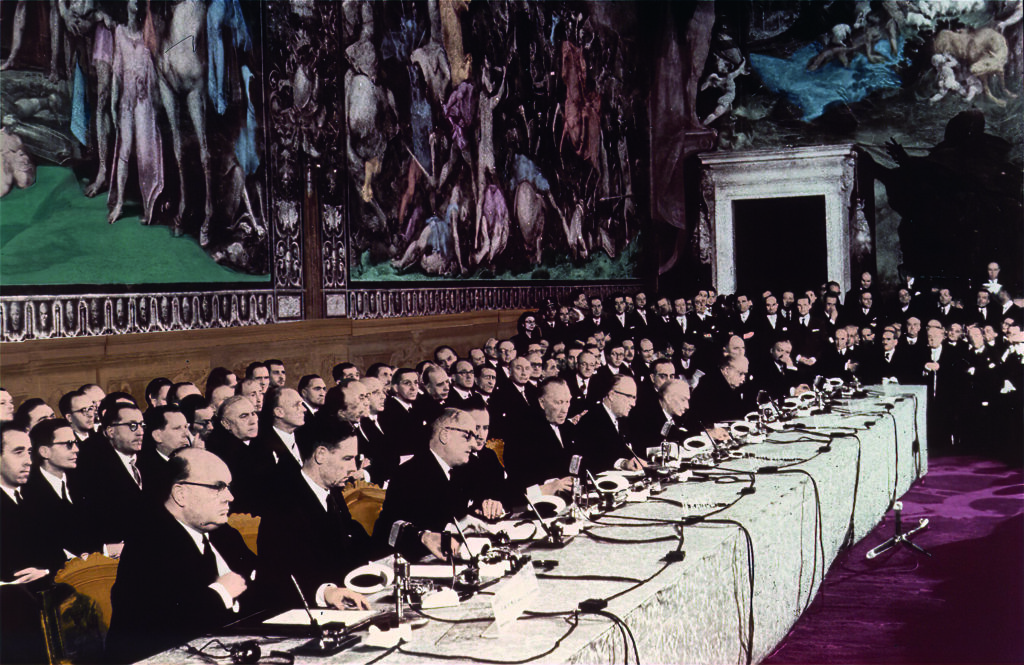
Emerging Internal Conflicts and the Age of Crises
The EU’s internal disputes started to flare up again soon after Lisbon. Many of these were of a familiar political-economic nature, but many stemmed from the self-contradictions of the EU’s particular structure. Not all of these disputes can be identified along the lines of federalist EU vs sovereigntist member states, since some of them take place within the Brussels organizational system. For example, there is a regular conflict between the president of the European Commission and the president of the European Council over which of them is considered the higher dignitary in foreign negotiations.
‘The EU has values that must be preserved (peace, political stability, prosperity), and…Brussels is…pursuing its own political agenda at the expense of these values’
The EU elite, less and less composed of bureaucrats and more and more a rallying point for politicians deemed unnecessary at home and political activists hiding behind NGOs, used the crises of the 2000s to consolidate its power. The global financial and economic crisis of 2008 created an ‘emergency’ in which the Brussels elite, already inclined towards federalism, unquestioningly turned to supranational solutions, thus strengthening the Commission’s position. It has become a favoured tool of the Commission to directly interfere in the fiscal decisions of member states, abusing the fact that the country in crisis is forced to borrow from the international financial institutions and that the Brussels elite can impose budgetary measures in exchange for the loan.7
The next big political breaking point was the migration crisis, after which the Brussels elite shifted up a gear. Although the European Council had insisted in two of its decisions, in 2016 and 2018, that any legal instrument on migration could only be adopted unanimously, this was completely ignored when the migration pact was pushed through. This showed perfectly clearly that the body had lost its main policy-making and guiding role. In simple terms, Brussels has wrested real power from the hands of the member states.
Another important crisis was Brexit, which appeared to have weakened the EU as a whole. However, the British vote to leave the EU in 2016—which happened in 2020—was particularly painful for the sovereigntist camp. The British have been fiercely protective of their sovereignty, often standing in the way of federalist initiatives from Brussels. With their departure, this too became a political crisis from which ultimately the Brussels elite benefited most.
During the COVID pandemic, forcing member states to join the slow and overpriced common vaccine procurement procedure was also a similar power grab by the Commission. Using this as a model, joint procurement by Brussels was then applied elsewhere. A good example is the creation of the European Peace Facility, an EU-wide arms procurement scheme. This instrument was created outside the budget to meet the arms needs of EU peacekeeping missions, but since 2022, it has been used exclusively for providing military support to Ukraine in its war. The EU, created as a peacekeeper, now supports external armed conflicts, using a procedure which originated during the COVID pandemic.
In many cases, we are seeing very creative ways in which the EU is taking on more and more competences. For example, in the case of the so-called Democracy Package, political advertising in member states was brought under EU regulation on the basis that it was seen as an economic activity rather than a political one. The same line is being taken to subject the entire media sector exclusively to EU law. In order to normalize so-called ‘rainbow families’, and to introduce gay marriage in every member state under the radar, they would legislate at the EU level to ‘protect the equal rights of children’ living in LGBTQ families.
The CJEU’s Role in the Federalist Push
I cannot stress enough the role of the Court of Justice of the European Union (CJEU) in the ongoing process of federalization. By clearly asserting the primacy of EU law, the CJEU is also inevitably on a collision course with the guardians of national law, the constitutional courts. Pavel Rychetsky, who was the president of the Czech Constitutional Court between 2003 and 2023, said that ‘if there is one branch of power whose authority is most threatened by EU law, it is the Constitutional Court’.8 The approach of the CJEU towards these institutions is rather one-sided and dogmatic, as it does not recognize their special status, or the role of constitutional courts within the national legal order. Instead, it regards them merely as one of the last levels of the national court system. By claiming the unity, direct effect, and primacy of EU law, the CJEU calls into question the assumption on which the work of the constitutional courts is based.9 The real question here is from which body the EU derives its jurisdiction, powers, and functions: the CJEU believes that it derives from the Treaties, while the constitutional courts believe that it derives from national constitutions, based on their delegated powers. According to Joseph H. H. Weiler, recognizing the absolute primacy of EU law in national thinking would in practice mean the creation of a federal Europe. In the Swedish debate on the issue, this position was labelled as ‘subservience’.10
In Case C-508/13 Estonia v Parliament and Council, the CJEU ruled that ‘The subsidiarity principle is not intended to limit the EU’s competence on the basis of the situation of any particular Member State taken individually, but requires only that the proposed action can, by reason of its scale or effects, be better achieved at EU level’.11 These principles were included in the Treaty on the Functioning of the European Union (TFEU) because of the fears of member states, but the CJEU has in practice rendered them unenforceable if they are only breached in the case of one or a few member states, saying that the balance must be for all member states. In practice, this makes it considerably more difficult to defend national interests and sovereignty against the EU, thus nullifying the protection that these provisions should provide.
On less technical issues, we have also seen clear federalist policy positions from this body, as for instance in the creation of the 2020 rule of law conditionality regulation, when Poland and Hungary’s submissions were rejected, even though the content of the regulation, the arbitrary withholding of funds, is clearly in breach of the Treaties and is a political weapon in the hands of the Brussels elite.
A Return to Normalcy: Which Way Forward?
The dual identity of the EU, consisting of both sovereigntist and federal elements, has made it a unique construction but also a rather fragile one. First, it must be determined whether it is possible to return to the pre-EU period. My answer to that is a firm no. The individual states of Europe are no longer what they were a hundred years ago, and even their combined strength is not enough to make them players rather than pawns on the global chessboard. Brexit has shown that leaving the EU does not solve all problems, but has instead plunged the UK into a more serious crisis. Leaving or dissolving the organization is therefore not a realistic alternative, at least not without some kind of successor.
One of the main problems of European integration is that the EU has neither the economic nor the military power to defend its own interests. While it has outsourced the former to China, it has left the latter to the United States. Beyond this, the problem is that the Brussels elite is apparently uninterested in Europe’s problems, and often unable to recognize them. Although Ursula von der Leyen dreamed of setting up a ‘geopolitical commission’, it has never materialized. The EU has not been able to take any meaningful action for peace outside its borders, even when there is war in its own neighbourhood, and has become involved in it through arms transfers. Yet keeping the peace, and staying out of conflict, is a vital European interest after the devastation caused by two world wars.
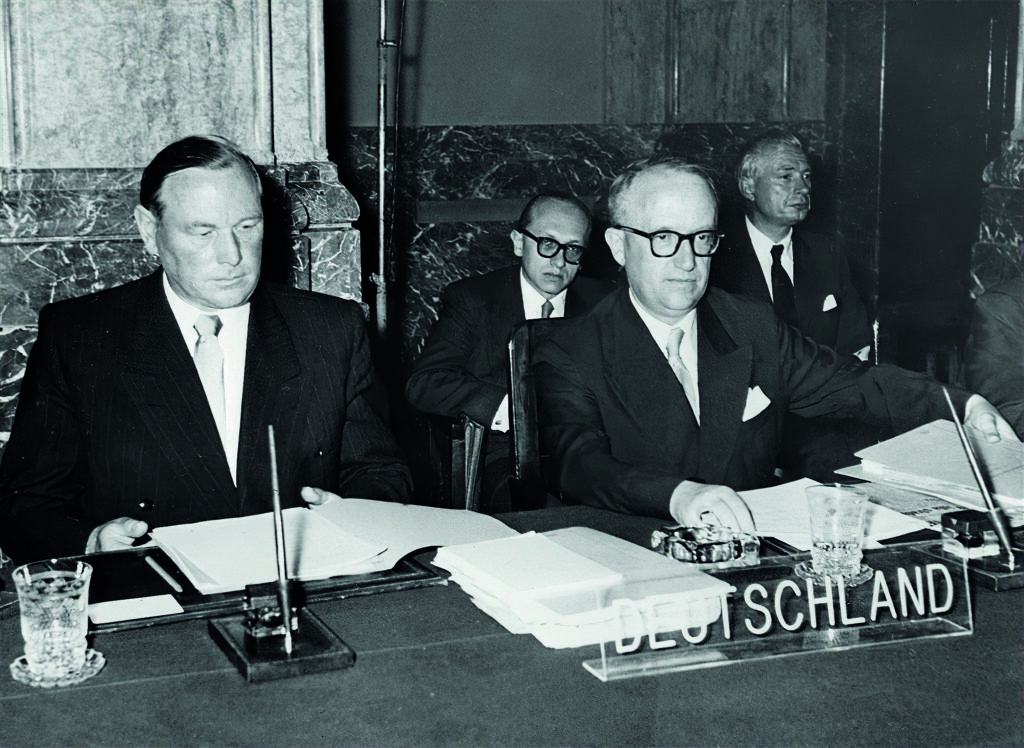
So, this means that the EU has values that must be preserved (peace, political stability, prosperity), and one of the problems with the current leadership in Brussels is that it is pursuing its own political agenda at the expense of these values. The question is whether this can be ensured only by returning to a previous state of affairs. A brief outline of the EU’s development history is, in my view, reason enough to call this an inadequate solution. After all, the EU is essentially an entity created by federalist dreamers with the hopes of creating such a federation, and federalization follows from its internal nature and the dominance of economic elements. It is possible to achieve a longer or shorter period of grace, as after de Gaulle or the Lisbon Treaty, but it will never be permanent.
But the world of politics is rarely about ideal solutions, so it is a perfectly acceptable response to the empire-building vision of the Brussels elite if this ambition is crushed before it is too late. In this case, it is essential that the new European Community returns to the word of written law, withdraws from areas acquired by competence creep, rebuilds the trust necessary to work with member states, and restores the European institutional structure to its intended role. Once again, member states must provide the political objective, and the Commission, which has taken this responsibility upon itself, must be returned to its original purpose of functioning as a bureaucratic office. This may also be more successful because we see that there is also a kind of sovereigntist movement among certain elements of the left that can join forces with conservative sovereigntists. We have seen this with Andrej Babiš and Robert Fico, for example.
If we are looking for a more idealistic, right-wing conservative solution to the puzzle, we have to question the current form of the EU as it is. It may be appealing to the economic right, but it contains very little for the social right.12 This would mean either a radical restructuring of the EU to align towards more of these values or its reduction to a mere economic cooperation platform. Although this may prove to be a very interesting thought exercise, I do not wish to go into details as it is far from political reality at this moment.
A more limited form of regional cooperation could also be a realistic alternative to the EU. This would seem to contradict what has been described above, but it is important to remember the wisdom of ‘less is more’. The EU’s current internal tensions and problems also stem in large part from the fact that the basis of its operating model was invented when it was still an exclusively Western European construct. It is much easier to secure the unanimous agreement of six member states than 27. In the past, Lajos Kossuth dreamt up the Danube Federation, a concept that—without its federal elements—could be a realistic alternative to the EU, as a collaboration of the Visegrád Group countries. Although the history of the states in the region is a history of conflict, it is precisely this that gave rise to Western European cooperation. The Danube was once the centre of the region’s economy, and trade, and could once again become an important factor. Foreign goods arriving at the port of Constanța would almost immediately move on to the heart of Europe, fully taking over Rotterdam’s current role as the gateway to Europe. However, this can only be considered as a Plan B if everything else fails.
Summary
In this paper, I have attempted to show the twists and turns in the history of the EU and how these have contributed to the current escalating conflicts. The inherently federalist structure with certain sovereigntist elements is inevitably a source of internal conflict, as are the very serious internal contradictions inherent in its structure.
The current federalist elite is skilfully exploiting the various crises and the fact that voters can only hold politicians at home to account for mistakes made by Brussels. In some European countries, domestic political crises have been perpetuated, and successive weak governments are unable to deal with European politics in any meaningful way. This effectively gives a free hand to the federalists, who are also readily supported by the pseudo-civilian international globalist network linked to the Soros name.
Fricz, in his writing, sees four possible outcomes to the current European crisis: the worst-case scenario is that European integration simply collapses under its own weight, and I agree that it would have catastrophic consequences. He envisions this as a sort of Balkanization whereby the EU fragments into smaller parts, of the sort I envisioned in the previous section. The second worst scenario is that the federalist forces push through their plans, abandoning Europe’s historic traditions and relegating those who oppose them to second-class status. The third scenario is the restoration of the status quo through some kind of compromise, of which we have seen countless examples in the history of the EU. Finally, the best option for Hungary is a sovereigntist turn for the EU.13
NOTES
1 Tamás Fricz, ‘Föderalizmus vagy nemzeti szuverenitás?’ (Federalism or National Sovereignty?), Kommentár, 3 (2020), 21–36.
2 Krisztina Arató and Boglárka Koller, Az európai egység fejlődéstörténete és az EU jelenkori kihívásai (The Historical Development of European Unity and the EU’s Current Challenges) (Budapest: Dialóg Campus, 2018). 6.
3 Fricz, ‘Föderalizmus vagy nemzeti szuverenitás?’, 21–36.
4 Arató and Koller, Az európai egység fejlődéstörténete és az EU jelenkori kihívásai, 13.
5 Várnay Ernő and Papp Mónika, Az Európai Unió joga (The Law of the European Union), 183–186.
6 Arató and Koller, Az európai egység fejlődéstörténete és az EU jelenkori kihívásai, 12.
7 Fricz, ‘Föderalizmus vagy nemzeti szuverenitás?’, 31–32.
8 Jan Komarek, ‘The Place of Constitutional Courts in the EU’, European Constitutional Law Review, 3 (2013), 420.
9 Maria Dicosola, Cristina Fasone, and Irene Spigno, ‘Foreword: Constitutional Courts in the European Legal System. After the Treaty of Lisbon and the Euro-Crisis’, German Law Journal, 6 (2015), 1317–1318.
10 Joseph H. H. Weiler, ‘The European Constitution and the Courts. Adjudicating European Constitutional Law in a Multilevel System’, Jean Monnet Working Paper, 9 (2003), 41–42.
11 C-508/13 – Estonia v Parliament and Council [53].
12 For more on this topic see: Benedikt Kaiser, ‘Az eljövendő konzervativizmus’ (The Coming Conservatism), Kommentár, 1 (2021), 72–82; and Paolo Becchi, ‘A szuverenista kihívás’, Kommentár, 1 (2019), 49–53.
13 Fricz, ‘Föderalizmus vagy nemzeti szuverenitás?’ 36.

